#Edward v
Explore tagged Tumblr posts
Text

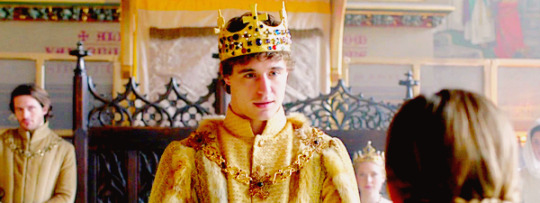


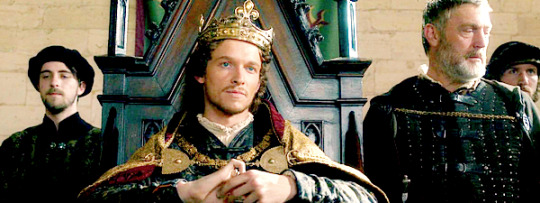
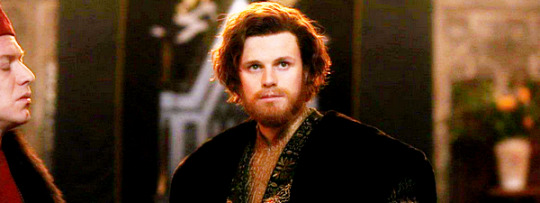
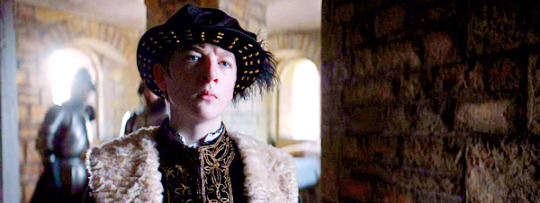





KINGS & QUEENS REGNANT OF ENGLAND ACCORDING TO STARZ
Henry VI (1 September 1422 - 4 March 1461, 3 October 1470 - 11 April 1471 second reign) as portrayed by David Shelley in The White Queen Edward IV (4 March 1461 - 3 October 1470, 11 April 1471 - 9 April 1483 second reign) as portrayed by Max Irons in The White Queen Edward V (9 April 1483 - 25 June 1483) as portrayed by Sonny Ashbourne Serkis in The White Queen Richard III (26 June 1483 - 22 August 1485) as portrayed by Aneurin Barnard in The White Queen Henry VII ( 22 August 1485 - 21 April 1509) as portrayed by Jacob Collins-Levy in The White Princess Henry VIII (22 April 1509 - 28 January 1547) as portrayed by Ruairi O'Connor in The Spanish Princess Edward VI (28 January 1547 - 6 July 1553) as portrayed by Oliver Zetterstrom in Becoming Elizabeth Jane Grey (10 July 1553 - 19 July 1553) as portrayed by Bella Ramsey in Becoming Elizabeth Mary I (19 July 1553 - 17 November 1558) as portrayed by Romola Garai in Becoming Elizabeth Elizabeth I (17 November 1558 - 24 March 1603) as portrayed by Alicia Von Rittberg in Becoming Elizabeth James I and VI of Scotland (24 March 1603 - 27 March 1625) as portrayed by Tony Curran in Mary & George Charles I (27 March 1625 - 30 January 1649) as portrayed by Samuel Blenkin in Mary & George
#perioddramaedit#the white queen#the white princess#the spanish princess#becoming elizabeth#mary and george#my edits#twqedit#twpedit#thespanishprincessedit#becomingelizabethedit#maryandgeorgeedit#david shelley#max irons#sonny ashbourne serkis#aneurin barnard#jacob collins levy#ruairi o'connor#oliver zetterstrom#bella ramsey#romola garai#alicia von rittberg#tony curran#samuel blenkin#henry vi#edward iv#edward v#richard iii#henry vii#henry viii
304 notes
·
View notes
Text
Time Travel Question : Murder and Disappearance Edition I
Given that Judge Crater, Roanoke, and the Dyatlov Pass Incident are credibly solved, though not 100% provable, I'm leaving them out in favor of things ,ore mysterious. I almost left out Amelia Earhart, but the evidence there is sketchier.
Some people were a little confused. Edward V and Richard of Shrewsbury are the Princes in the Tower.
#Time Travel#Famous Murders#Jack the Ripper#La Bete du Gevaudan#Gandillon Family#Werewolves#William Rufus#King William II#Edward V#Richard of Shrewsbury#French History#English History#Early Modern Europe#Victorian England#Lord Darnley#Mary Queen of Scots#Scottish History#Amy Robsart#Lord Dudley#The Sodder Children#The Somerton Man#Australian History#Prime Minister Harold Holt#Elizabeth Short#The Black Dahlia
509 notes
·
View notes
Text

As promised, new art. I am beginning to realise that there may not be a way to upload onto this website without it becoming DREADFULLY pixelated and losing quality (I already downsized this significantly). So if anyone has any advice on that front I’d greatly appreciate it.
#shakespeare fanart#shakespeare#richard iii#history fanart#edward iv#edward v#How do I tag the other Duke of York
55 notes
·
View notes
Text
My take on what happened to the Princes in the Tower? They were the only true Christians and therefore were the only people taken in the Biblical Rapture.
219 notes
·
View notes
Text

Except he wouldn't be telling just anyone: the theory is he told his son. Here's how MAYBE it went:
1) before 1515, possibly when he's dying, Miles Forrest tells his son Miles "I killed the kids"
2) Miles Forrest dies sometime before 1515. Very possible: 32 years is plenty of time to die.
3) Miles the son becomes courier to Thomas More
4) Miles the son tells More "my dad before he died said he killed the princes on the orders of James Tyrrell. Also a guy called John Dighton did it."
If Miles Forrest has already died, then he can't be executed for the murder. And Miles the son can't be executed for his father's actions, especially if he was a kid at the time. Yeah, Miles Senior could be posthumously punished and his property confiscated but given Miles Junior is a courier they're probably not that rich a family. Or maybe that's why More doesn't identify his source.
Obviously this is conjectucture. But as a theory it seems much less fanciful to me than the idea the princes survived
"Maybe they're different Miles Forrests" maybe. But "Miles Forrest" is a much less common name than say John Smith or Mary Baker in this time period. I can name dozens of Thomases and Marys but not many Mileses spring to mind.
IIRC, the guy who snitched on Anne Frank to the Nazis told his son that he did it. So it's possible that people hear about crimes from their parents: especially in an age of deathbed confessions.
40 notes
·
View notes
Text

You really thought I would not see you, Richard? Really?
Edward IV, Edward V and Richard III our York boys.
#wolf hall#the mirror and the light#richard iii#edward iv#edward v#periodramaedit#house of york#by fefa#I love when he does a cameo
27 notes
·
View notes
Note
the two skeletons may reveal the death of the Princes? 👀
I'm not super familiar with this topic, tbh. From what I can understand, it's possible, but it's equally possible that DNA testing may not actually prove or reveal anything regarding the Princes.
Context: In 1674, workmen found two skeletons in a wooden box in the Tower of London, where they had been buried 10 feet under the staircase leading to the chapel of the White Tower. Charles II ordered the bones to be reinterred in Westminster Abbey in 1678, and a Latin inscription written at that time translates to: "Here lie the relics of Edward V, King of England, and Richard, Duke of York".
In 1933, the bones were examined by Lawrence Tanner, William Wright and George Northcroft, who concluded that they belonged to two children around the correct ages for the Princes, and that one skull showed evidence of death by suffocation. No further scientific examination was conducted, although many believe that re-examination with improved techniques and DNA sampling could provide a more accurate analysis. However, to disinter a body from the Abbey, permission has to be granted from the reigning monarch (ew), which has not been granted as of yet.
Many members of the R3 Society hope that the bones will be proved not to be the Princes, because they feel like it will vindicate Richard due to the absence of explicit, tangible evidence of their deaths. Those who believe Richard III was guilty (he was) believe that if the bodies were the Princes, it would prove they were murdered. If examinations reveal that were the Princes, and reveal manner of death was violent, then yes, the latter seems reasonable. But we don’t know what will will show up in the results - if they are ever allowed - and it's entirely possible it won't matter to the current case.
To quote @seethemflying from this post:
“Most scholars agree it will not actually prove anything at all. If the bones are the princes, it just proves that they died in the Tower, not who murdered them. If the bones are not the princes, it just means these bones belong to someone else. The Tower of London is old, and was built on part of Londinium's Roman wall. Pre-medieval and even Roman human remains have been found on the site before, it wouldn't be a surprise if these bones dated to any point before the 17th century […] Whether the bones are or are not the princes can therefore do little to answer the central questions about who killed these little boys.”
For example, there are a few sources - both contemporary and post-contemporary - that suggest water may be involved in the Princes' "disappearance" (murder). We don't know the exact circumstances, but if the Princes were disposed off in such a manner, we cannot expect to ever find their bodies.
Ultimately, regardless of the identity of the two skeletons, the Princes were almost definitely were murdered, and Richard III was almost definitely the one who murdered them. We do not know it "for sure", the same way we do not know "for sure" if Arthur of Brittany, Edward II, Richard II and Henry VI were murdered (and how), but all of them almost definitely were and it’s simply disingenuous to pretend otherwise. It’s equally disingenuous to act as though all the above-mentioned cases were clear-cut examples of murder while the case of the Princes is somehow a more Complex and Confusing one which you have to choose your words more carefully over when it's....really, really not (see: the matter-of-fact way they talk about John and Arthur VS Richard and the Princes). Either you should analyze all these cases with the same level of assertion/uncertainty, or don't analyze them at all.
Also, contrary to the claims of Ricardians, who believe that nobody accused Richard III until the Tudors, there are a range of independent contemporary sources who firmly believed he killed his nephews. It also makes zero sense for Elizabeth Woodville, Elizabeth of York and Edward IV's supporters, who were the ones to raise Henry Tudor as an active claimant to challenge Richard III in the first place, to endorse Henry in any way if they thought that Edward V or Richwrd of Shrewsbury might still be alive. The fact that they did can only mean that they knew/believed that the Princes were dead (though I think there was considerable ambiguity on the exact circumstances behind those deaths). It's simply illogical to pretend otherwise.
#ask#sorry but I'm really fed up with how much people have to walk on eggshells when discussing the Princes#(and Edward II as well tho I don't think it's comparatively as widespread in popular history as that of the Princes)#(also the way a few blogs/historians are now trying to argue Henry VI actually died of grief...please Stop)#it's really zero steps forward 10 steps back 🤡#we don't explicitly tangibly know if they were murdered. we don't explicitly tangibly know 90% of things in history#but you can still use your brains and come to the only logical conclusion possible which is the fact that they undoubtedly were#princes in the tower#english history#edward v#richard of Shrewsbury
20 notes
·
View notes
Text
If Edward V gets to be counted as a legitimate monarch then so should Empress Matilda and Lady Jane Grey
50 notes
·
View notes
Text
#Richard III#Edward V#Richard of York#Princes in the Tower#Tower of London#William Shakespeare#Shakespeare#Henry VII
12 notes
·
View notes
Text












Royal Birthdays for today, November 2nd:
Constance, Queen Regnant of Sicily, 1154
Yolande, Duchess of Lorraine, 1428
Edward V, King of England, 1470
Anne of York, English Princess, 1475
Anna of Austria, Queen of Spain, 1549
Magdalene of Jülich-Cleves-Berg, Countess Palatine of Zweibrücken, 1553
James Louis Sobieski, Polish Prince, 1667
Anne, Princess Royal and Princess of Orange, 1709
Marie Antoinette, Queen of France, 1755
Prince Edward, Duke of Kent and Strathearn, 1767
Mehmed V, Ottoman Sultan, 1844
Sophia of Greece and Denmark, Queen of Spain, 1938
#constance i#yolande of lorraine#anne of york#marie antoinette#edward v#anna of austria#anne of great britain#prince edward#queen sofia#sofia of greece and denmark#James Louis Sobieski#mehmed v#Magdalene of Jülich-Cleves-Berg#royal birthdays#long live the queue
15 notes
·
View notes
Note
can i pat edward v?
Sure vro

#he silly I feel bad for him#ermmm what the scallop#artists on tumblr#silly drawing#art#digital illustration#Edward v#princes in the tower#edwardposting
16 notes
·
View notes
Text




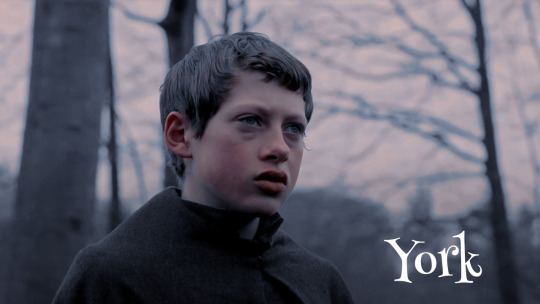
the white queen 10 year anniversary: house lancaster vs house of york
#edward iv#elizabeth woodville#anne neville#richard iii#edward v#max irons#rebecca ferguson#aneurin barnard#faye marsay#house of york#wars of the roses#15th century#rebeccafergusonedit#maxironsedit#abarnardedit#twqedit#perioddramaedit#weloveperiddrama#thewhitequeendaily#weloveperioddrama#myedit*#mine*#twq10
99 notes
·
View notes
Text

suffering martyrdom sacrifice (boys edition) etc board 🙇 thinking about the christmas truce 💔
#ww1#ww2#american civil war#ancieng egypt#lotr#st sebastian#Catholicism#atonement#the iliad#coal mining#edmund fitzgerald#labor history#millitary history#railroad workers#swannanoa tunnel#rupert brooke#american west#cowboys#golden age of whaling#whaling#train hopping#medieval manuscript#princes in the tower#Edward v#hagiography
7 notes
·
View notes
Text
Me on a date: what do you think happened to the princes in the tower after the summer of 1483?
#me#part 2#edward v#king edward v#prince richard of shrewsbury#the war of the roses#1400s#15th century#richard iii#the princes in the tower#the tower of london#history#early renaissance#late medieval#mysterious disappearances#ice breakers
12 notes
·
View notes
Text
Mancini, who left England around the time of Richard’s coronation, tells of men bursting into tears when Prince Edward was mentioned: ‘already there was a suspicion that he had been done away with.’6 If this was indeed the case – and it has, of course, been furiously disputed – it marked a departure from earlier precedent in that there was no funeral to confirm the fact of their death; but it is not difficult to imagine why that might have been. The funeral of two children would have been, to put it in modern terms, a public relations disaster. There is at least no doubt that contemporaries thought that they were dead, and acted accordingly. It is inconceivable that the predominantly Yorkist rebels against Richard III would have backed Henry Tudor, in most people’s eyes an exiled nonentity with no claim to the throne, as their candidate for king if they had thought that Edward’s sons were still available.
Richard III: A Failed King?, Rosemary Horrox
49 notes
·
View notes
Text
Personally I think the Forrest connection is much more interesting than Edward V's chain.
Whatever happened to Edward V, someone would get his stuff. It's not like his personal possessions instantly evaporate the moment he dies. Particularly his valuables. It's normal for valuables to be taken by the Crown and redistributed. And I think Margaret Capell knew that- hence why she calls it "Edward v's chain".
10 notes
·
View notes